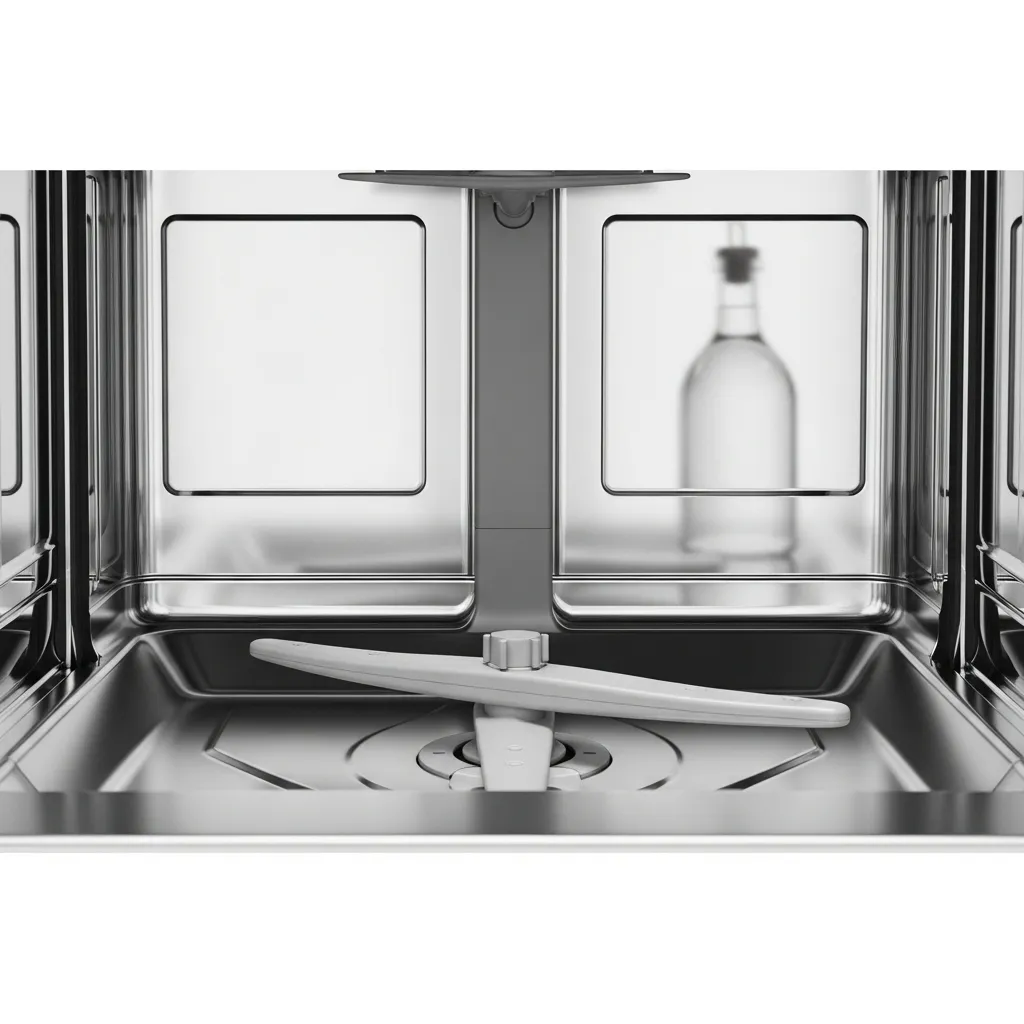
3. Deep Clean and Deodorize Your Dishwasher
Your dishwasher is a workhorse, but over time, it can accumulate soap scum, hard water deposits, and trapped food particles that lead to unpleasant odors and reduced cleaning efficiency. A monthly vinegar rinse is a simple, hands-off way to keep the interior sparkling, the spray arms clear, and the whole machine smelling fresh. This is one of the easiest cleaning hacks with vinegar you’ll ever use.
How Vinegar Helps Your Dishwasher:
Just like with your coffee maker, the acetic acid in vinegar works to dissolve the hard water film and soap scum that can coat the stainless steel tub, racks, and spray arms. It also acts as a natural deodorizer, neutralizing the lingering smells of old food. A clean dishwasher not only looks better but also cleans your dishes more effectively.
The Simple One-Step Cleaning Method:
Step 1: Empty the Dishwasher. For this deep clean, you’ll want to run the machine completely empty. Remove all dishes, cutlery, and racks if you want to give them a separate wipe-down.
Step 2: Check the Filter. Before you run the vinegar cycle, take a moment to check the dishwasher’s filter. This is usually located on the floor of the machine, often under the bottom spray arm. Twist to unlock it, pull it out, and rinse it under hot water to remove any trapped food debris. A clogged filter is a primary cause of dishwasher odors and poor performance. Consult your appliance manual if you’re unsure how to remove it.
Step 3: Place the Vinegar. Take a dishwasher-safe bowl or measuring cup and place it on the top rack. Fill it with one to two cups of distilled white vinegar. Placing it on the top rack ensures it will be distributed evenly as the cycle runs.
Step 4: Run a Hot Cycle. Close the dishwasher door and run a full cycle using the hottest water setting available (often labeled “heavy” or “sanitize”). Do not add any detergent. The hot water will circulate the vinegar throughout the entire machine, cleaning the tub, hoses, and spray arms.
A Quick Note on Stainless Steel and Gaskets:
Most modern dishwashers with stainless steel interiors are perfectly safe for an occasional vinegar rinse. The vinegar is heavily diluted by the water in the cycle, and the contact time is limited. However, it’s always wise to check your owner’s manual for the manufacturer’s recommendations on cleaning. Some may advise against using acidic cleaners. Also, avoid pouring vinegar directly onto rubber gaskets or seals regularly, as prolonged exposure to acid could potentially degrade them over time. The diluted rinse cycle is generally considered safe.
For an extra cleaning boost, after the vinegar cycle is complete, you can sprinkle a cup of baking soda on the bottom of the dishwasher and run a short, hot water cycle. This will help further deodorize and remove any lingering stains.

















